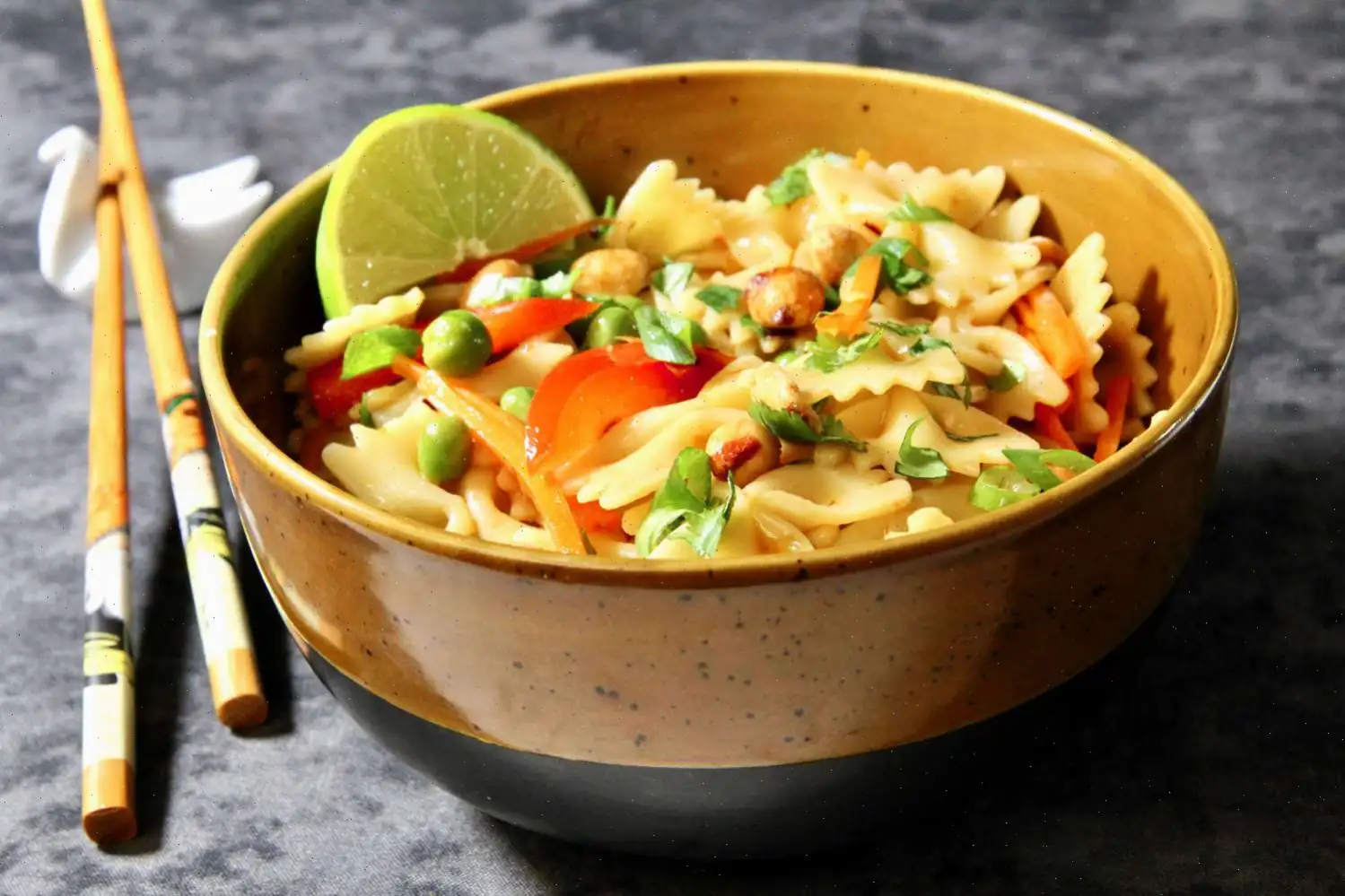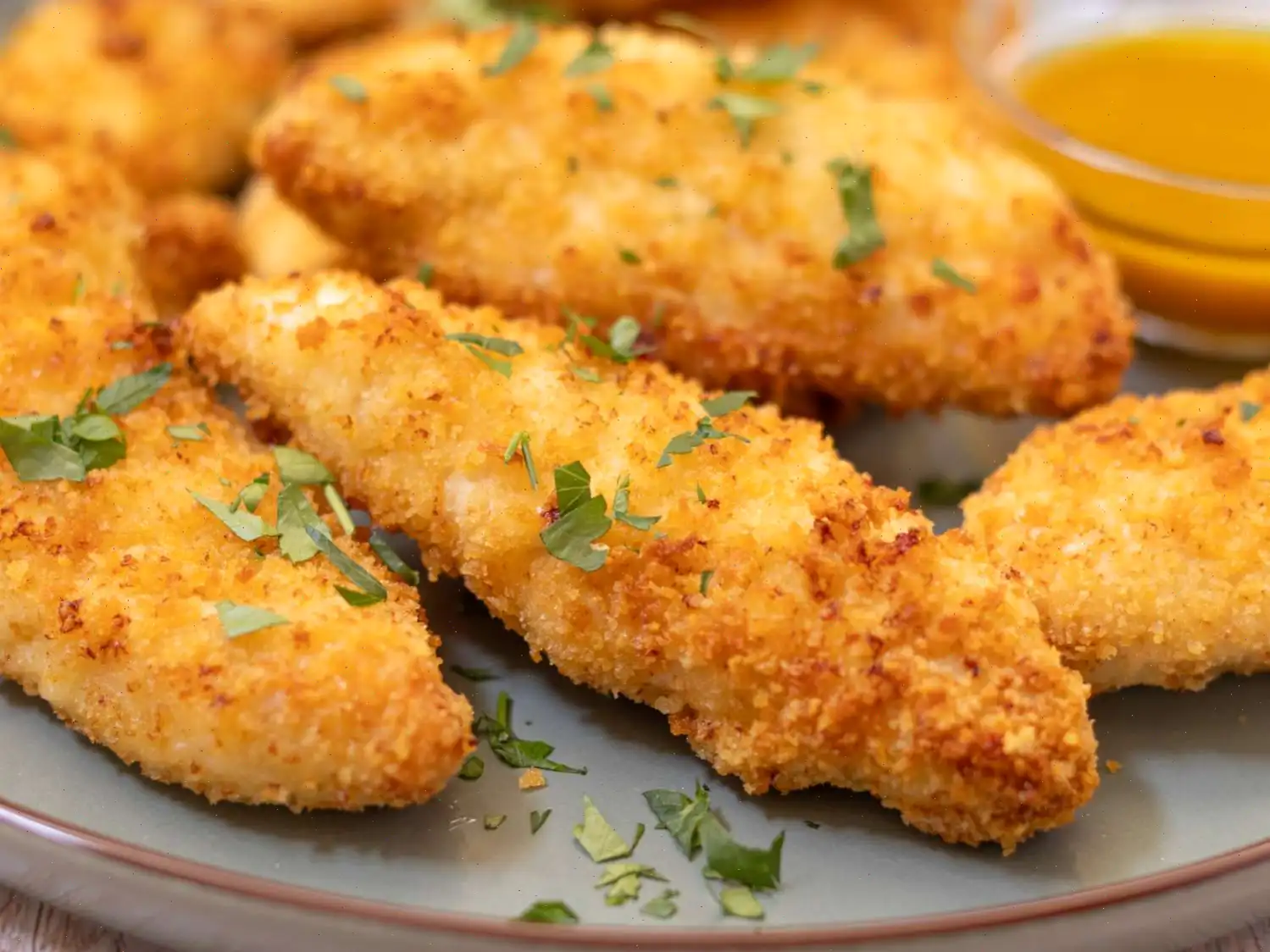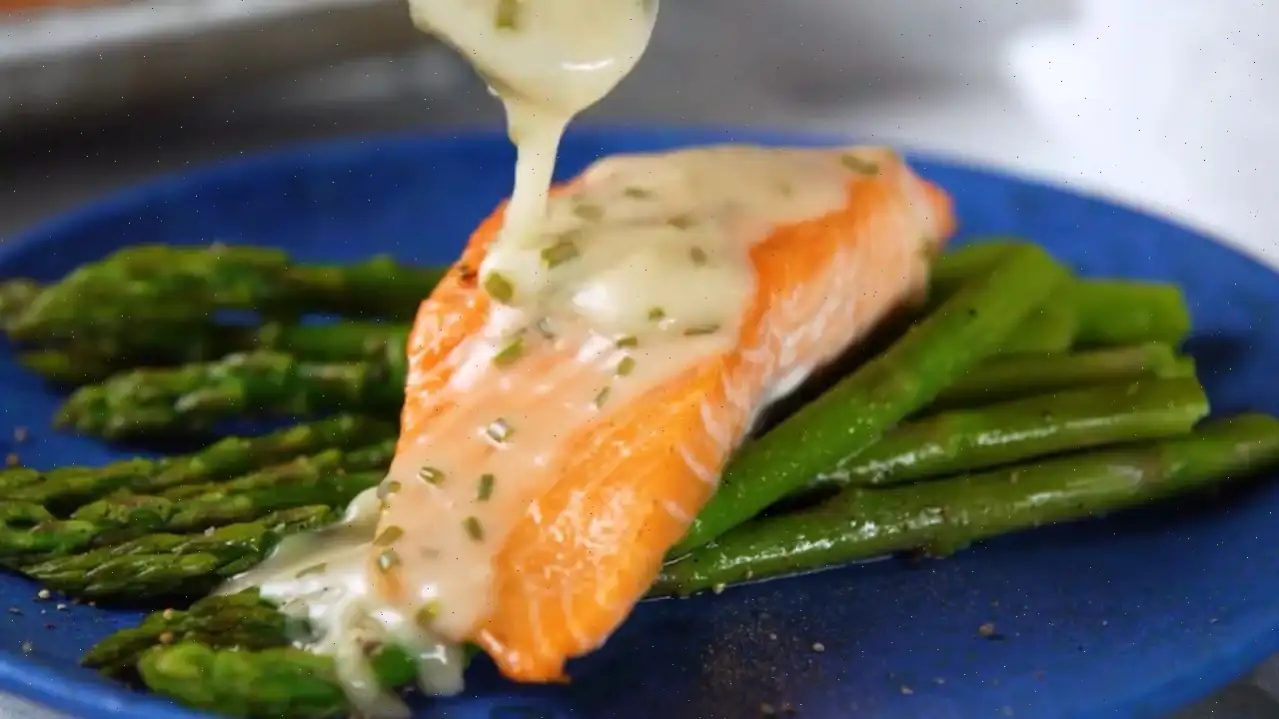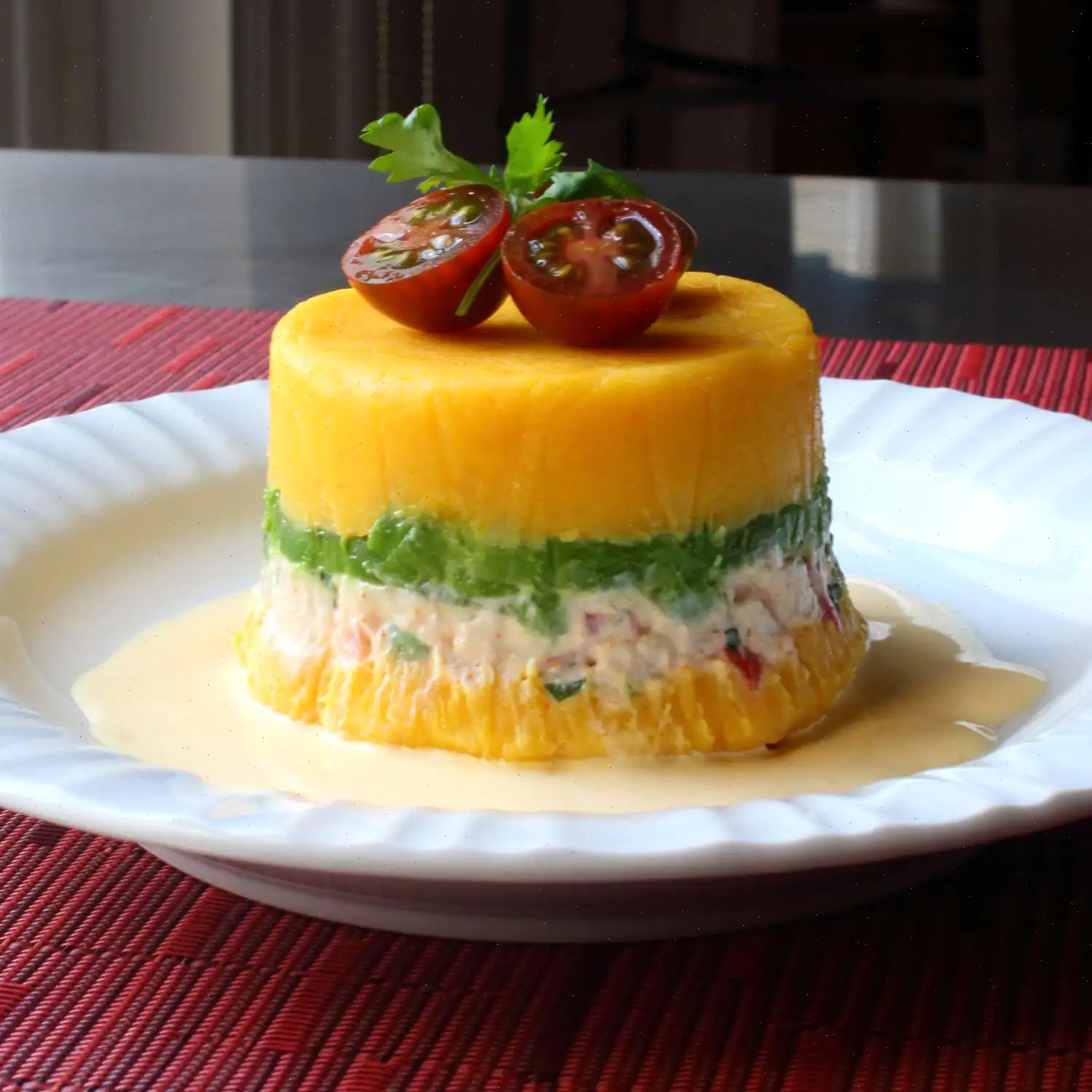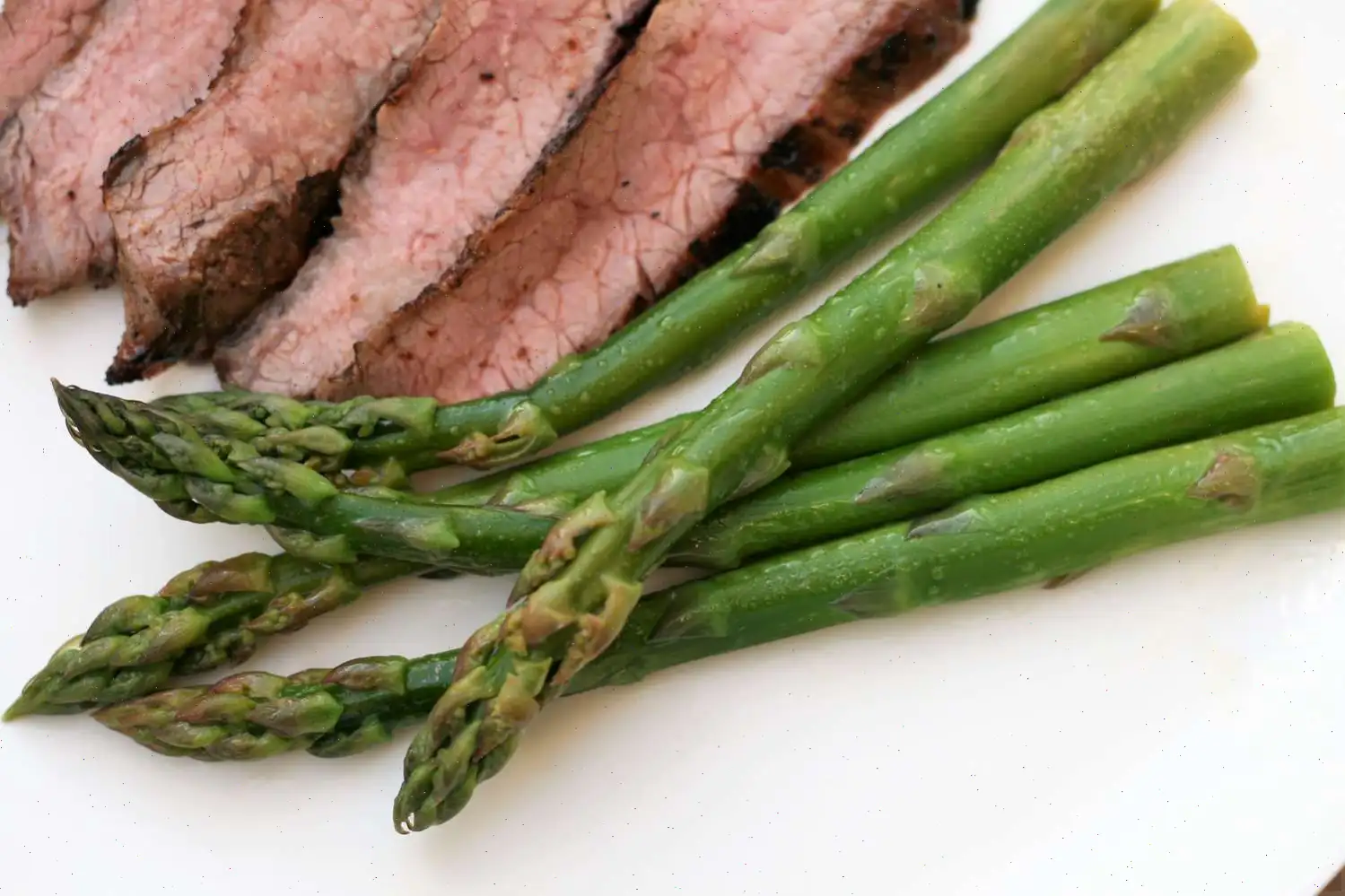
Thai Pasta Salad Recipe
Ingredients
Dressing:
- 3 tablespoons sesame oil
- 1 tablespoon vegetable oil
- 1 tablespoon low-sodium soy sauce
- 1 tablespoon balsamic vinegar
- 1 tablespoon fish sauce
- 1 tablespoon chili-garlic sauce
- 1 tablespoon fresh lime juice
- 1 teaspoons seasoned rice vinegar
- teaspoon white sugar
Salad:
- (16 ounce) package farfalle (bow-tie) pasta
- cup frozen peas, thawed
- cup shredded carrots
- cup thinly sliced red bell pepper
- 3 tablespoons thinly sliced green onions
- 2 tablespoons chopped fresh cilantro
- 2 tablespoons dry-roasted peanuts
- teaspoon crushed red pepper flakes, or to taste
- 4 wedges lime
Directions
Step 1: In a small bowl, whisk together sesame oil, vegetable oil, soy sauce, balsamic vinegar, fish sauce, chili-garlic sauce, lime juice, rice vinegar, and sugar until the dressing is well combined. Set it aside.
Step 2: Bring a large pot of lightly salted water to a boil. Add the pasta and cook for about 10 to 12 minutes, stirring occasionally, until its tender but firm to the bite. Drain the pasta and rinse it under cold water to stop the cooking process. Return the pasta to the pot.
Step 3: Drizzle the prepared dressing over the pasta. Gently stir to coat the pasta evenly.
Step 4: Add peas, shredded carrots, bell pepper, green onions, cilantro, peanuts, and crushed red pepper flakes to the pasta. Stir everything together until well combined.
Step 5: Serve immediately at room temperature with lime wedges on the side. Alternatively, chill the salad in the refrigerator and serve it cold for a refreshing dish.
Cooks Note
You can substitute farfalle pasta with any small pasta or thin noodles if you prefer.
Nutrition Facts (per serving)
- Calories: 291
- Total Fat: 17g (21% Daily Value)
- Saturated Fat: 2g (11% Daily Value)
- Cholesterol: 0mg (0% Daily Value)
- Sodium: 578mg (25% Daily Value)
- Total Carbohydrate: 32g (12% Daily Value)
- Dietary Fiber: 5g (17% Daily Value)
- Total Sugars: 4g
- Protein: 7g (14% Daily Value)
- Vitamin C: 34mg (38% Daily Value)
- Calcium: 48mg (4% Daily Value)
- Iron: 2mg (10% Daily Value)
- Potassium: 243mg (5% Daily Value)
* Percent Daily Values are based on a 2,000 calorie diet. Your daily values may be higher or lower depending on your calorie needs. ** Nutrient information is not available for all ingredients. If you are following a medically restrictive diet, please consult your doctor or registered dietitian before preparing this recipe.
The Origins of Thai Pasta Salad
Thai pasta salad is a modern fusion dish that blends traditional Thai flavors with Western pasta. While Thailand has a rich culinary history centered around rice and noodles, the idea of combining pasta with Thai ingredients emerged as global travel and culinary experimentation became popular in the late 20th century. This salad reflects the Thai philosophy of balancing flavorssweet, sour, salty, and spicywhile incorporating familiar Western staples like farfalle pasta. It is often attributed to Thai-inspired kitchens in the United States and Europe, where chefs adapted local ingredients to replicate authentic Thai taste profiles.
Regional Variations
Although this dish is not traditionally Thai, it draws heavily from the regional flavor profiles of central and northern Thailand. Central Thai cuisine emphasizes sweet and sour notes with ingredients like lime juice, fish sauce, and sugar. Northern adaptations may include fresh herbs like cilantro or mint to brighten the salad. In coastal areas, roasted peanuts or cashews are often added for texture, while the spiciness of chili-garlic sauce can be adjusted depending on local preferences. Each variation highlights the adaptability of Thai flavors to international ingredients like pasta, making it a versatile dish across different regions.
How It Differs from Similar Dishes
Unlike traditional Thai noodle salads such as Yum Woon Sen, which use glass noodles, Thai pasta salad uses Western-style pasta like farfalle, making it heartier and more filling. While other Asian-inspired pasta salads may rely on mayonnaise-based dressings, this recipe features a light, zesty Thai dressing with fish sauce, lime, and chili-garlic, offering a more authentic Southeast Asian flavor. The use of fresh vegetables, roasted peanuts, and herbs gives the salad a vibrant texture that differentiates it from heavier pasta salads common in Western cuisine.
Typical Serving Context
Thai pasta salad is versatile in its serving context. It is commonly served as a refreshing side dish at casual summer gatherings, picnics, and potlucks. In restaurants, it can be offered as an appetizer or a light lunch, often accompanied by grilled meats or seafood. It can be served chilled or at room temperature, making it convenient for buffet-style meals or pre-prepared weekly lunches. Its balance of textures and bold flavors makes it a popular choice for both home cooks and professional chefs seeking a crowd-pleasing, colorful dish.
Interesting Facts
- The fusion of Thai flavors with pasta is part of a larger trend of Thai-Western cuisine, which has gained popularity in international food markets since the 1990s.
- Roasted peanuts in the salad not only add crunch but also reflect the Thai custom of incorporating nuts for contrast in texture and flavor.
- The salad can be easily adapted for vegetarian or vegan diets by replacing fish sauce with soy sauce or tamari, without losing its characteristic flavor profile.
- Lime juice in the dressing provides a natural preservative effect, allowing the salad to stay fresh longer when chilled.
- Many home cooks experiment with different types of pasta, from penne to fusilli, showcasing the dishs flexibility while maintaining the Thai-inspired taste.
You can listen to this recipe in AI audio format. Simply click the play button below to listen to the content in a format that suits you best. It’s a great way to absorb information on the go!


